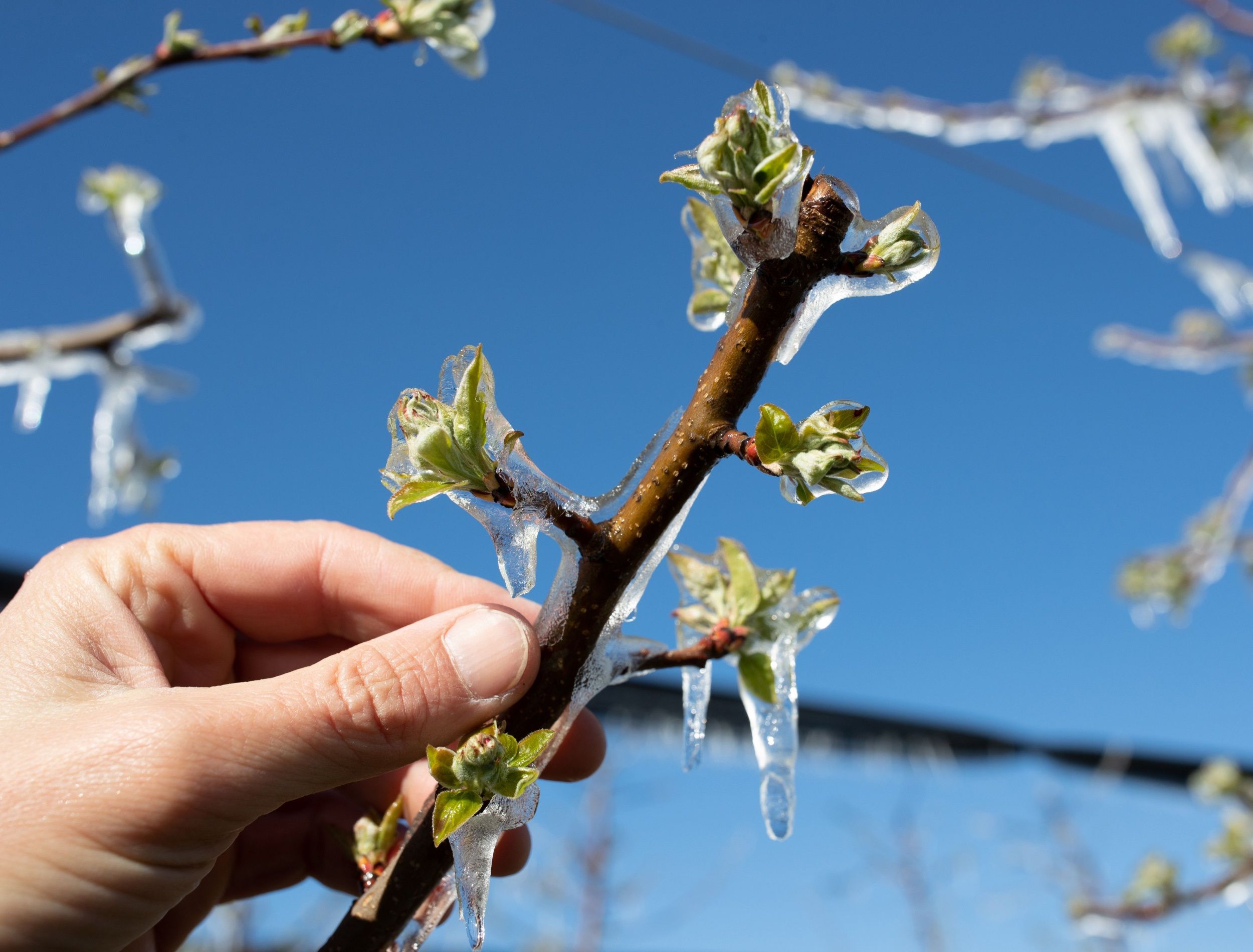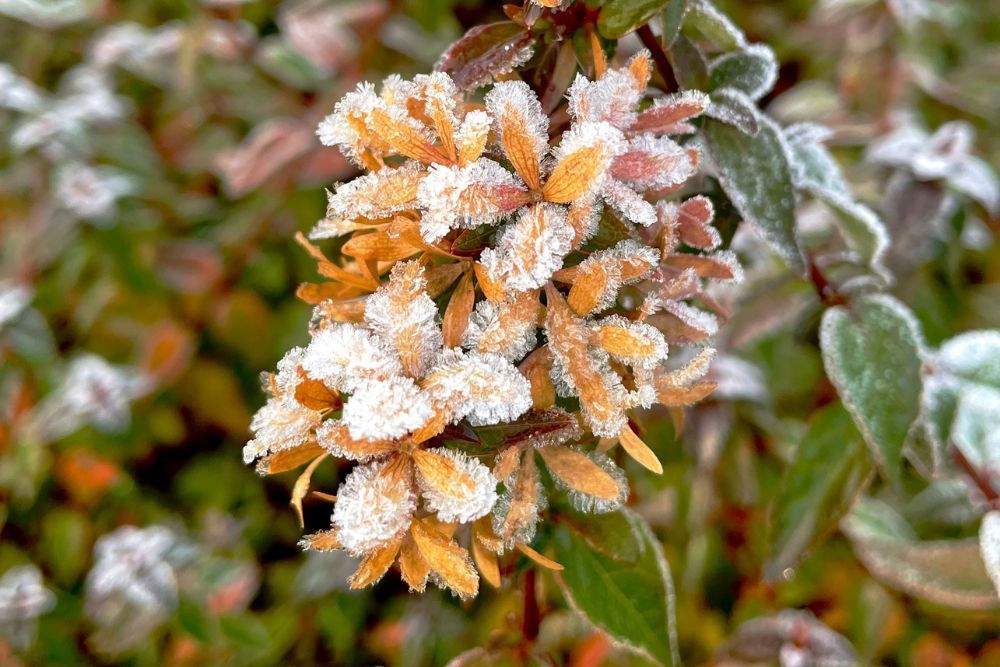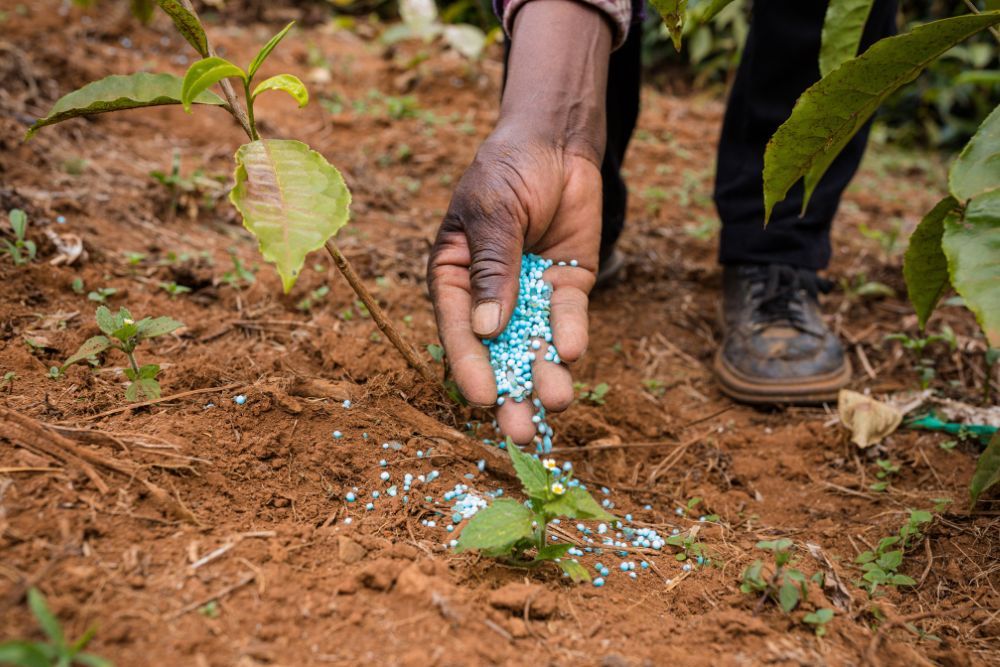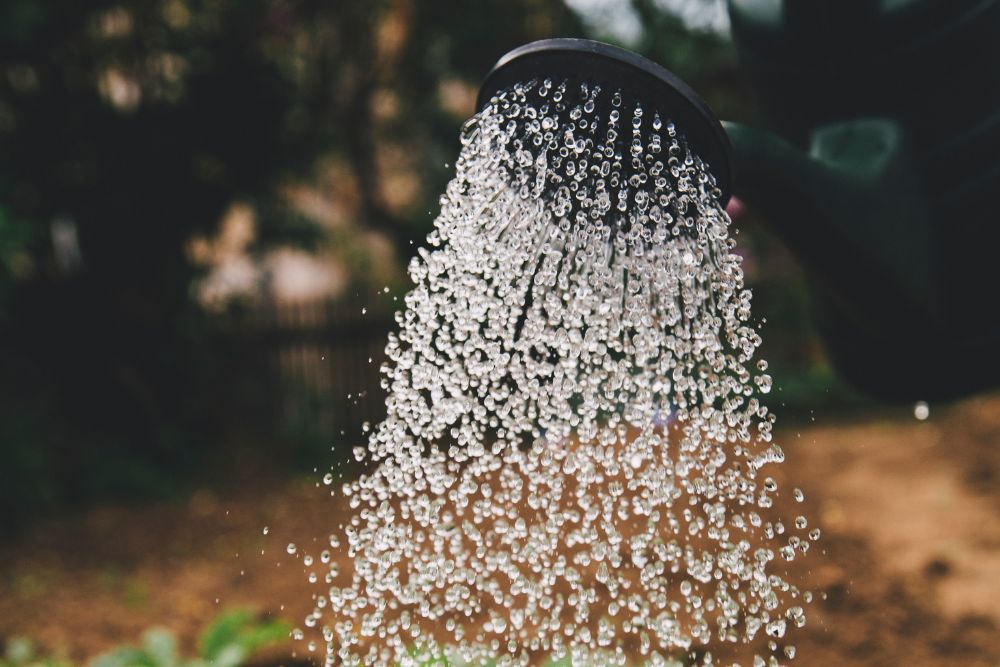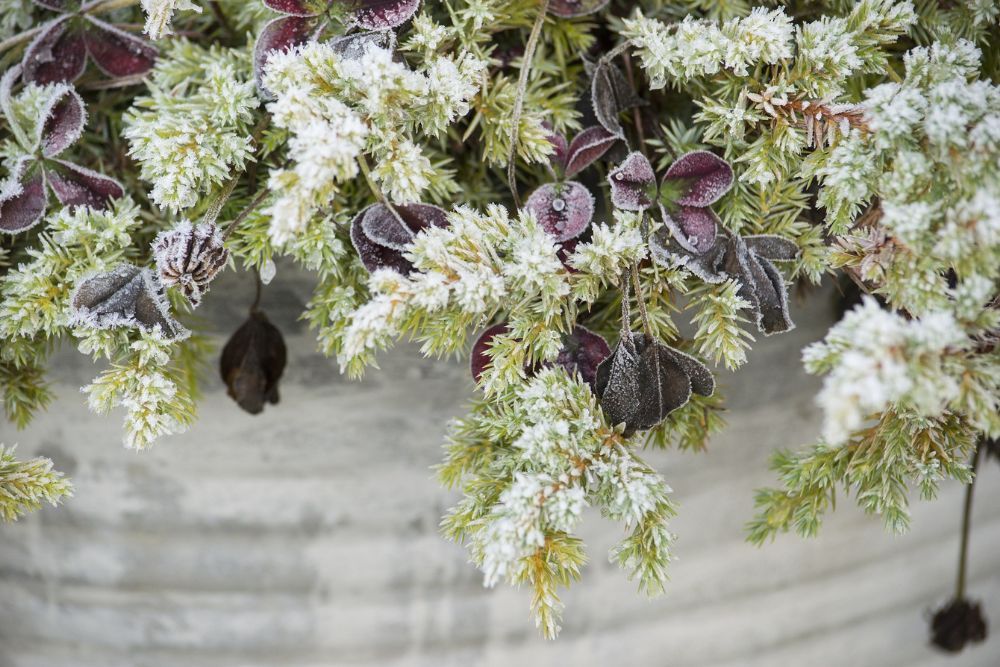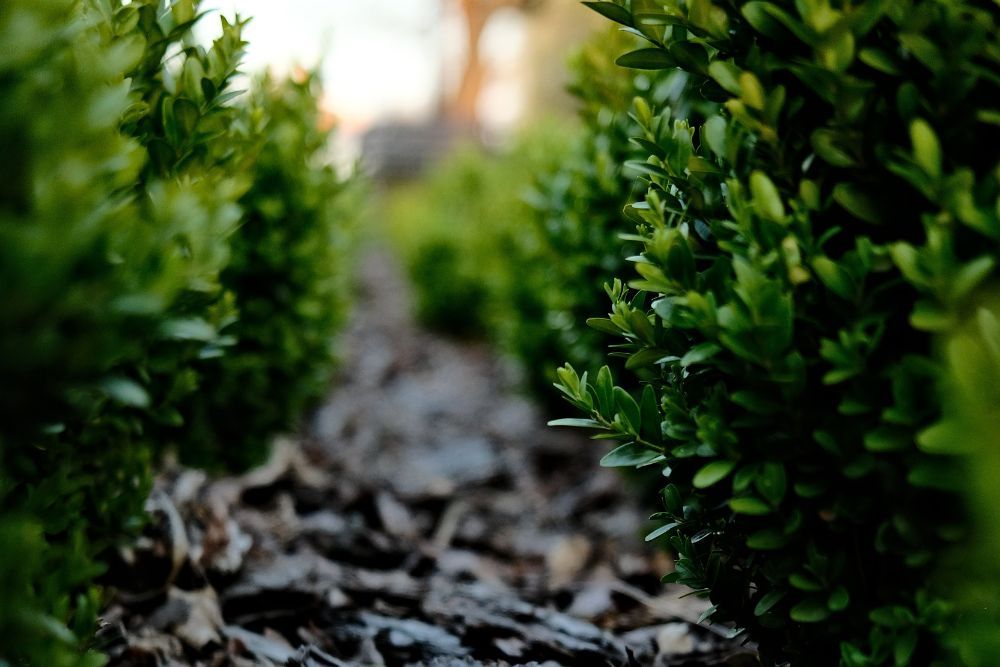You put your heart into caring for your plants so, when frost damages your precious babies, it's cause for concern. Frost creates little ice crystals to develop within the cells of the plant's leaves and branches but as the ice forms it also expands. This breaks these cells open and kills the plant. After a frost, look for signs of this damage such as wilting, browning, and dry leaves. If you see these indicators, frost may have taken your plant hostage.
Ready for the good news? There are steps you can take to try and rescue your plant after frost damage. With some care and patience, you can help revive your plant and prepare it for future frosts.
Be Patient Before Pruning
Image credits: Pop & Zebra via Unsplash
When you first see signs of frost damage like yellowing or browning leaves your first instinct might be to prune it off. However, it's actually better to be patient. If you prune right away you may not see the full extent of the damage. Some parts of the plant that look dead could naturally revive. Plus, dead foliage can also insulate the live parts of the plant from future frosts.
So how long do you wait? It depends on the plant. You'll start to see the damage on leaves in just a few days. For larger branches, you may have to wait for a few months until it is completely evident.
A good rule of thumb is to wait until you see new growth. Look for new green leaves or scrape a bit of the bark away from the wood on branches with your nail. If you see green wood then that branch is okay, but if the wood is black or brown then frost has killed it. Then you can prune away all the dead parts of your plant including any dead wood.
Fun Fact: Frost doesn't immediately kill all vegetation. Some types of plants can survive a light frost better than others. For instance, broccoli plants can survive temperatures below 28 degrees Fahrenheit.
Wait to Fertilize
Image credits: Antony Trivet via Pexels
It can be tempting to fertilize a plant right after a frost. Fertilizers can boost a plant's growth with essential nutrients so it sounds like a great idea. However, this is a common mistake you should avoid. Fertilizing a plant too soon can put extra stress on your plants. This is because fertilizers help encourage growth and your plant needs to prioritize healing instead of rapidly growing.
Instead, wait until you see signs of natural growth like green foliage. This indicates the plant is recovering. You can then apply fertilizer when temperatures are consistently above 32 degrees Fahrenheit. Remember, not all plants benefit from the same fertilizers. Always research your particular plant's needs first.
Water to Help Recovery
Image credits: Markus Spiske via Unsplash
Watering after a frost can also help your plants recover. Feel the soil 1 to 2 inches deep near the base of the plant. If it is dry, thoroughly water the soil. This will help to hydrate your plant and provide the moisture it needs to heal. While watering your plants is generally important, it is especially key after a frost. The groundwater could freeze preventing the roots from soaking it up. Provide your plant with water so the frozen ground can thaw.
Pro Tip: You can also water before a frost to keep plants healthy and give them a better chance at survival.
Rescue Houseplants
Image credits: Arnica Backstrom via Pixabay
Oops! You put your houseplant outside and now it has frost damage! When this happens, act fast and bring your plant inside as soon as you notice the damage; Put it back where you were previously cultivating it indoors. Except, make sure you keep it out of direct sunlight for at least two days, so then it has time to acclimate to the new environment.
Then, water it with 1 inch of water as soon as you take it inside to help it rehydrate. Let the water completely drain out of the bottom and then place it back in a dry saucer. In a few weeks, you can prune away dead flowers and then after a few months, you can cut back dead foliage.
This gives your plant time to recover and focus on healing.
Prevention is Always The Best
Image credits: Egor Komarov via Pexels
The best approach to reviving plants after frost is to help prevent damage in the first place. There are a few key strategies you can take. First, choose plants that are hardy in your growing zones as they can better withstand the lowest temperatures in your area. For instance, kale, onions, and turnips are all frost-hardy vegetables that can tolerate temperatures below 28 degrees Fahrenheit.
In autumn, apply 2 to 4 inches of wood mulch around the roots of your plants. Create a shape that resembles a donut around the base of shrubs or trees. The center of the donut should extend 6 inches out from the tree trunk.
You should also thoroughly water the soil before frosts. This will prevent the frost from setting into the ground as deeply. Then, check for any cracks in the soil and fill them in to prevent cold air from harming the roots. Last but not least, wrap plants in burlap to protect foliage.
Gardeners To The Rescue
Frost can cause extensive damage to plants. To help plants recover, wait for new growth until you prune or fertilize and water the soil immediately. For best success, you can also prevent frost damage by cultivating frost-hardy plants, applying mulch over roots in autumn, and wrapping plants in burlap.
How do you rescue your plants from frost damage? Share your tips for reviving plants below to help fellow gardeners get their gardens back on track!

